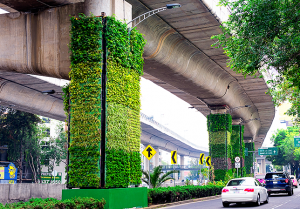The Dawn of Vertical Forests

Source: Stefano Boeri Architects
China is out to build a fleet of the most nature-incorporated architectural structures in the world. Construction has begun on Asia’s first vertical forest – the Nanjing Vertical Forest — and is expected to be complete by 2018 thanks to thearchitectural vision of Stefano Boeri. His vision is to build green settlements of 100 – 200 buildings each, of different heights and sizes, all featuring green rooftops, balconies, and facades. Imagine how city skylines will change colors through the seasons.

Source: Via Verde
Critics point to the need for a more thorough analysis: Buildings that can handle the additional weight of soil and forests will have to be built stronger, requiring more CO2 producing cement. And water will be required for the plants to thrive… another scarce input in many places. But proponents claim that these structures are anti-sprawl devices. They point out that the vertical forests are a viable alternative to urban sprawl.. which is also heavy in its use of concrete. These are alternative urban environments. They allow residents to live close to nature, typically achieved by commuting and living in the suburbs.
In related news, the Via Verde Project in Mexico is transforming highway pillars with plants that cleanse, beautify, and hopefully lower driver stress.
